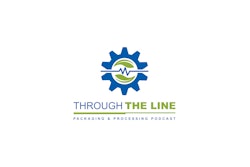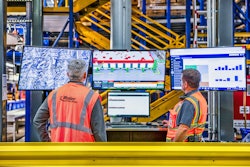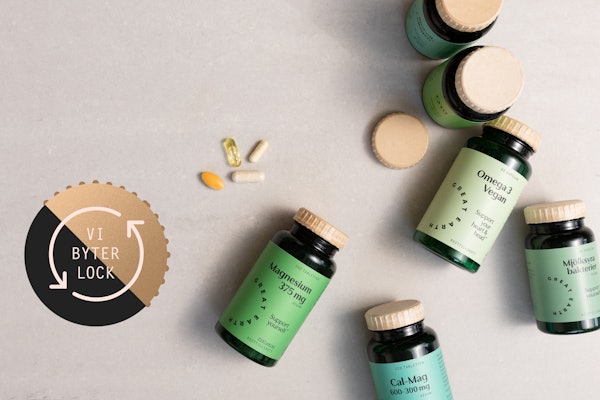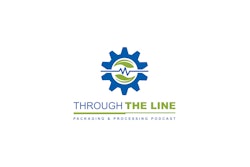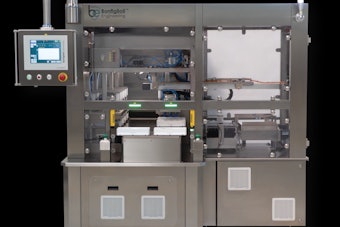Key Takeaways:
- The 10% blanket tariff on all imported goods that could theoretically impact healthcare packaging.
- Just as certain packaging will be impacted, so too will the size of the companies making those packaging decisions.
- The experts agree that there is no time to waste to re-evaluate your packaging supply chain, strengthen its resiliency, and mitigate the impact of potential tariffs.
Leave it to the pharmaceutical industry to bring a sense of bipartisanship to the U.S. Congress – all in the name of strengthening supply chains and bringing manufacturing of drugs and materials back to the U.S. In March 2024, the Homeland Security and Government Affairs Committee crossed party lines to prohibit executive agencies like FDA, CDC, and NIH from contracting with or extending loans and grants to a “biotechnology company of concern” headquartered in a foreign adversary’s government.
In February 2025, Republican Congresswoman Claudia Tenney (NY-24) re-introduced The PILLS Act (aka Producing Incentives for Long-term Production of Lifesaving Supply of Medicines) to promote the domestic production of generic medicines and shift production away from India and China. This month, Senator Bernie Sanders (I-VT) agreed with President Trump that drug prices are too high and that he would support legislation that matches the president’s goal of lowering those costs; lower drug prices will impact future supply chain decisions.
However, there is less consensus with regard to tariffs and how they may be a tool for safeguarding the healthcare supply chain. An investigation of Section 232 (which imposes tariffs) of the Trade Expansion Act, was launched by the Commerce Department to determine if the pharmaceutical supply chain poses a threat to national security. Premier Inc., a technology-driven healthcare improvement company, wrote in response to a request for comments from the Commerce Department that “the thoughtful and targeted use of tariffs can provide to supply chain resiliency in the long-term, material increases in tariffs on healthcare supplies coupled with rapid implementation timelines can result in unintended consequences that increase costs and shortages in the short-term.”
PwC estimates that a 25% tariff would burden the economy with $76 billion in added costs (The Hill). Nick Iacovella, executive vice president, Head of Public Affairs & Communications, Coalition for a Prosperous America (CPA), a bipartisan organization representing exclusively domestic producers, counters that tariffs would encourage U.S.-based manufacturing of pharmaceutical packaging, thereby reducing long-term risks of supply disruptions and quality concerns related to foreign imports. “Ultimately, those benefits far outweigh potential short-term cost increases,” he says.
In its written response to 232, the CPA’s position is that “the U.S. must pursue a multi-pronged strategy to rebuild a secure and resilient pharmaceutical supply chain. Section 232 trade measures must address the full scope of supply chain fragility, reduce single-source dependency, and support the rebuilding of an integrated U.S. pharmaceutical manufacturing base.”
Sterile Packaging Will Be Hardest Hit
Any discussion about pharma manufacturing undoubtedly involves packaging and it is the 10% blanket tariff on all imported goods that could theoretically impact healthcare packaging. Glenn Hunzinger, U.S. health industries leader, PwC, says tariffs may apply to packaging components sourced from countries affected by trade measures, regardless of whether the drug itself is tariff exempt. “Sterile injectable packaging components, including vials, stoppers, and syringes, are more at risk due to their stringent compliance standards and limited supplier base. These requirements make them more sensitive to trade disruptions compared to packaging for solid dosage forms,” he says.
Iacovella agrees, “Sterile injectable packaging and other complex pharmaceutical delivery systems are typically at higher risk due to fewer qualified manufacturers and greater dependency on specialized raw materials or components predominantly sourced overseas.”
Premier points out that enteral feeding syringes have no current known manufacturing outside of China, leaving them susceptible to large tariffs. “The sterile injectable market is already prone to shortages for multiple reasons and tariffs could put additional pressure on those products, especially those manufactured outside the U.S.,” says Mark Hendrickson, director of Supply Chain Policy for Premier Inc.
Opportunity Lies on the Runway
Just as certain packaging materials will be impacted, so too will the size of the companies making those packaging decisions. Brendan McCarthy, CPA, audit partner at Grassi & Co., certified public accountants who serve the life science industry, explains that established companies with commercialized product that know their margins and know their supply chain won’t have as hard a time. “They can typically figure out more easily how to move to other countries or if they even want to do that.”
On the other hand, clinical-stage companies awaiting FDA approval have limited capital to make these critical decisions, he says. “If I was expecting that for every $10 of product sold I will have $2 for packaging, $5 for sales and the remainder for the company,” he describes. “Will they now be able to market the new product the same way they expected to initially? Do they have to reevaluate their entire strategy now because of tariffs?”
In both scenarios, McCarthy says it is most important to understand the length of your runway to make the best decision before there is a cost of inaction. “Every day you don’t make the decision not to move your supply chain, how much will that cost you? The pain threshold for an established company is different than a clinical company. If you understand that threshold, it will allow you to gather as much information to give yourself the best chancing at making the correct decision.”
Understanding that threshold presents a significant opportunity to potentially reshore the supply chain.
“This tariff moment offers clarity and incentive to rebuild domestic manufacturing infrastructure and creates greater certainty around supply, higher quality standards, and more secure access to supplies, enhancing both economic and national security,” says Iacovella.
“In other words, never waste a good crisis,” asserts McCarthy.
Tips for Building a Strong Packaging Supply Chain
The experts agree that there is no time to waste to re-evaluate your packaging supply chain, strengthen its resiliency, and mitigate the impact of potential tariffs. These objectives can be achieved by considering a few key points:
1. Build inventory buffers, expedite shipments, establish warehousing in key locations, explore FTZs or bonded storage, and negotiate supplier contracts. “Pharma packagers should urgently build strategic stockpiles of critical components to buffer initial supply shocks,” says Iacovella. “Create reserves of essential packaging components to maintain supply continuity during initial tariff implementation.”
2. Diversify suppliers. Consider dual sourcing. “Establish relationships with multiple domestic and trusted allied-country suppliers to avoid single-source vulnerabilities,” says Iacovella.
McCarthy adds, “Look for trustworthy companies and those that supply similar packaging product to what you are using now. “Building relationships with multiple sources can minimize disruption once tariffs take effect.”
3. Know country of origin. Map every packaging component back to its true country of origin; don’t assume it’s came from where it was purchased. This may also include adapting tariff mitigation strategies like First Sale for Export (a duty reduction program designed to reduce the dutiable value of eligible products imported into the U.S.) or USMCA qualification (compliant goods may be exempt from tariffs). Hunzinger recommends that companies evaluate the country of origin for all materials, including packaging, as intermediate production steps or multinational supply routes can result in tariff liabilities.
“Understanding suppliers’ true source of raw materials and components, identifying vulnerabilities such as geopolitical risks or quality control issues, and preparing alternative sourcing strategies or reshoring options are critical steps to safeguard against potential disruptions,” says Iavocella.
4. Build flexibility. “Move your supply chain to where it can be more flexible in the future,” says McCarthy. “If you’re an established company and your supply chain is substantially in China, can you begin the process of diversifying to areas like the Philippines, India, or Germany over the coming weeks, months and years to help reduce volatility of tariffs? You don’t necessarily have to move the entire supply chain, but just moving 10-20% can make you more flexible.”
5. Build a cross-functional team with finance, tax, trade compliance, and supply chain to create a holistic mitigation strategy and communication plan. McCarthy says: “The team should include anyone with a broad view of the supply chain and beyond, who understands revenue, distribution, sales, and all of the variables.”
6. Implement scenario planning to manage risks. Kyle MacKinnon, senior director, Operational Excellence for Premier Inc. recommends simulating and modeling tariff scenarios to assess risk exposure and to visualize alternative suppliers or sourcing strategies. “In an environment where tariffs are changing quickly, having a digitally enabled supply chain allows leaders in this industry to create ‘what-if’ scenarios and respond with data-driven insights,” he says.
7. Qualify alternative domestic or allied-country suppliers. Packaging professionals are expected to actively engage in reshoring initiatives, drive supplier diversification, and ensure supply chain transparency. This includes identifying domestic or reliable allied-country suppliers, proactively managing supply risks, and advocating internally for strategic shifts toward safer and more secure sources. Hendrickson says companies need to internally evaluate suppliers to make sure they meet the needs of the company, and also follow multiple regulatory and guidance documents. In particular, he points to U.S. Code §211.122, which covers packaging requirements for pharmaceutical products. This includes regulations on packaging materials, labeling, and container closure systems.
“The packaging professional’s role is critical in pushing companies toward sustainable long-term sourcing strategies aligned with national security priorities,” says Iacovella. “Proactively engaging with domestic manufacturers, particularly those ramping up capacity in anticipation of tariff implementation, can secure priority access to essential supplies.”
Industry insiders stress that qualifying new suppliers and, subsequently, new components involves rigorous due diligence, including quality audits, risk assessments, and regulatory compliance checks on the part of the packaging professional. “Confirm that new suppliers adhere strictly to FDA’s Current Good Manufacturing Practices (cGMP) and have proven records of reliability,” Iacovella says. “This requires validating materials through compatibility tests, stability studies, and demonstrating regulatory compliance to the FDA.
Hunzinger adds, “Investing in domestic sourcing and actively participating in or supporting efforts to rebuild U.S.-based production capacity will ensure long-term stability.”
Looking long-term, the experts were asked if paying for packaging supplies that are domestically sourced will offset the cost of tariffs. “We don’t know yet,” answers McCarthy. “This is like trying to build and fly a plane simultaneously. “While there is a lot of capacity for packing materials in China and Europe, there is not a ton of capacity in the U.S., so the cost of onshoring is rather significant right now.”
Don’t Be Complacent
Also significant is the cost of doing nothing. When the tariff discussion began, companies were scrambling around talking to domestic suppliers and thinking they had to move their supply chains. Then, the dust settled a bit and companies went into a ‘wait-and-see’ mode.
“This is an interesting time for everyone whereby things you didn’t have to think about you are suddenly thinking about,” says McCarthy. “This harkens back to understanding your runway and how long you have to make decisions before they cost you. Some make decisions quickly and there is a risk to that. Those who wait too long may see opportunity pass them by. Continually evaluate the appropriateness of your supply chain, and how robustly it will be able to react to systemic shocks. This should become an annual planning exercise rather than part of a five-year plan.”
And, like airline schedules, he says, “The only certainty is uncertainty.”




